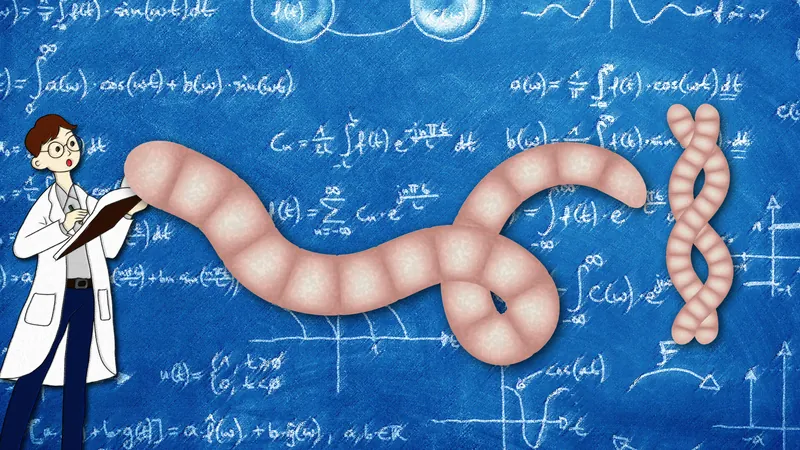
Breakthrough in Behavioral Modeling: Scientists Perfectly Simulate Animal Movement, Paving the Way for Innovation!
2024-10-02
Breakthrough in Behavioral Modeling
In a groundbreaking study, scientists have unveiled a revolutionary method to replicate the intricate movements of animals with unmatched precision. This significant advancement tackles a challenging issue in biology: accurately modeling the complex and often unpredictable behaviors of living organisms. The research primarily focused on the nematode worm Caenorhabditis elegans, which is a widely utilized model organism in the field of biological research.
The findings, showcased in the Proceedings of the National Academy of Sciences, promise to enhance our understanding and prediction of animal behavior, potentially transforming fields from robotics to medical research. This pioneering research is not just a scientific triumph; it could revolutionize how we approach numerous applications in our daily lives!
Insights from the Leading Scientists
Prof. Greg Stephens, the head scientist at the Biological Physics Theory Unit at the Okinawa Institute of Science and Technology (OIST), elaborated on the novelty of their model: “Unlike simple physical systems, animal behavior exists in a complex interplay of regular and random actions. Our model's unique capability to capture this delicate balance sets it apart; no one has previously presented a model that replicates animal movement so convincingly.
Dr. Antonio Costa, the leading author from the Paris Brain Institute at Sorbonne University, further explained, “An animal’s actions are dictated by a multitude of factors—its internal state, environmental interactions, developmental history, and genetic makeup. Crafting these influences into a straightforward, predictive model is a remarkable achievement and highlights the sophistication of our approach.”
A Deep Dive into the Modeling Process
The methodology behind this model involved several intricate steps. The research team meticulously recorded high-resolution videos of worm movements and employed advanced machine learning techniques to track the worm's shape in each video frame. Through this analysis, they gained valuable insights into how the shape and movement of the worm evolved over time. One crucial aspect was determining the amount of historical data necessary to ensure reliable predictions were made.
“The statistical comparisons between actual animal behavior—such as movement speed and frequency of behavioral adjustments—versus those produced by our simulations revealed a striking degree of accuracy,” Dr. Costa noted.
Implications that Could Change Lives
The potential applications of this research extend well beyond studying worms. The team is actively engaging with companies that utilize these nematodes to evaluate the effects of various chemical compounds on behavior. They are also extending their modeling process to other species, including zebrafish larvae, which have become instrumental in drug development research. One particularly exciting avenue is the exploration of applications in human medicine, especially concerning movement disorders like Parkinson's disease.
The implications for medical research are profound. Current diagnostic techniques for movement disorders often depend on fleeting and subjective observations made during short clinical consultations. These subtleties can escape direct observation, complicating accurate diagnoses. This innovative approach could allow for continuous, objective monitoring of patient movements—even within their home environments—thus facilitating more precise diagnoses and tailored treatment plans.
Additionally, the model holds tremendous potential in the realm of robotics, where developing natural movement has long been a challenge. By gaining deeper understanding from animal locomotion, engineers could potentially engineer robots that move in more adaptable and efficient ways, truly mimicking the fluidity of living organisms.
As scientists continue to refine their models and explore further applications, the world watches in anticipation. The fusion of biological insight with technology heralds an exciting future—can you imagine the possibilities? Stay tuned as this story unfolds!









 Brasil (PT)
Brasil (PT)
 Canada (EN)
Canada (EN)
 Chile (ES)
Chile (ES)
 España (ES)
España (ES)
 France (FR)
France (FR)
 Hong Kong (EN)
Hong Kong (EN)
 Italia (IT)
Italia (IT)
 日本 (JA)
日本 (JA)
 Magyarország (HU)
Magyarország (HU)
 Norge (NO)
Norge (NO)
 Polska (PL)
Polska (PL)
 Schweiz (DE)
Schweiz (DE)
 Singapore (EN)
Singapore (EN)
 Sverige (SV)
Sverige (SV)
 Suomi (FI)
Suomi (FI)
 Türkiye (TR)
Türkiye (TR)